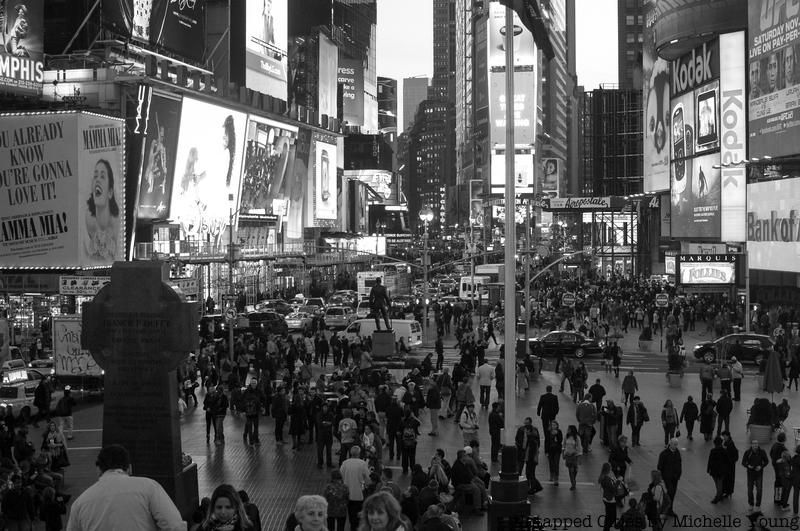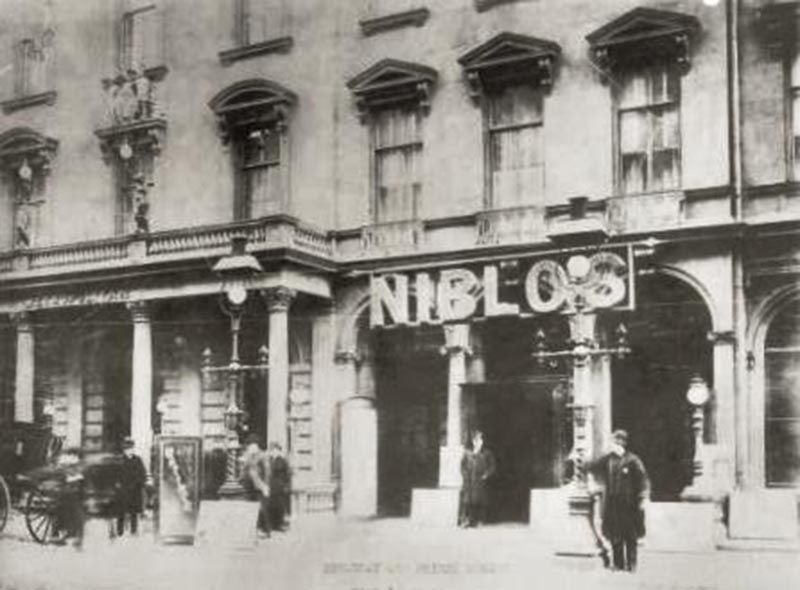Last Chance to Catch NYC's Holiday Notalgia Train
We met the voices of the NYC subway on our nostalgia ride this weekend!


No, it’s not named after Jaws, nor is it racial commentary. “The Great White Way” became one of the nicknames for Broadway in the late 1890s, back when the street was one of the first to be fully illuminated by electric light.
By the turn of the century, Broadway was already revered as the mecca for aspiring American stage actors. But that had not always been the case. In 1732, the whole of New York theatrical activity was taking place in an empty space near the intersection of Maiden Lane and Pearl Street, (and eventually in other undocumented empty spaces and lots around the city) but by the middle of the 18th century, New York theater had finally become an institution, one that, as we well know today, would eventually become one of the most beloved in the world.
The first true performance space in New York was the Theatre on Nassau Street, which was located just east of Broadway; the theater, which hosted NYC’s first musical production (The Beggar’s Opera by John Gay) on December 3, 1750, was built in 1732 and run by actor-managers Walter Murray and Thomas Kean until it was torn down and replaced by a church in 1754. Soon, other theatrical spaces started to pop up, though most of them were located in what we would consider today to be downtown, not in the stretch of avenue from W. 47th street to W. 53rd that made Broadway famous.
Why was theater becoming so popular so quickly during this time? Well, there is, naturally, the artistic merit of the form to consider–and the fact that prostitution was allowed in the top galleries of theaters, where the small (and largely corrupt) New York police force made sure to turn a blind eye, and where any illicit goings-on would be least disruptive to the actors on stage and the higher paying customers in the better seats down below. Through the mid 1700s, young men flocked to the theaters in droves so that they could experience this added attraction (and also, perhaps, because they had a flair for the dramatic).
During the 1800s, there were some elaborate theaters located on Broadway. The incredibly lavish theater inside of Niblo’s Garden, for instance, which sat proudly at the Prince Street intersection, could seat up to 3,000 guests comfortably. One of several of New York’s “pleasure gardens” in the 1820s, Niblo’s was arguably the most popular among members of all of the social classes; boasting a hotel, a saloon, and a rambling outdoor beer garden with gaslit gravel paths that wound through lush green foliage and partially hidden gazebos where string quartets played lilting music. Overhead, fireworks crackled in the New York sky every night of the week.

One of 1820s New York’s many pleasure gardens, Niblo’s Garden was run by owner William Niblo until it was demolished in 1895. For more about Niblo’s and the other pleasure gardens of the time period, check out The Bowery Boys’ podcast and article on the venue. Photo via Wikimedia Commons from NYPL Digital Collections.
Despite the slow uptown progress of New York’s growing population, the Broadway associated with theatre as we know it today would not come to exist until the 1870s or so, right around the time that Edison patented the incandescent lightbulb in America; with incandescently lit stages, the theater became a much less hazardous venture (the use of gas lights on the stages was tricky, and only thin wooden boxes, tin blinders, or glass panes protected a wooden stage from each gas light’s open flame). These innovations caught on in a rapid contagion among theater owners and operators around the world, and by the 1890s, the gas lamps that had lit most New York stages had been replaced by the new incandescent lighting systems. As Richard D’Oyly Carte (the producer at London’s Savoy Theatre at the time) explained, incandescent lights eliminated many of the nuisances of attending the theater, making it a much more attractive way for the public to spend an evening:
The greatest drawbacks to the enjoyment of the theatrical performances are, undoubtedly, the foul air and heat which pervade all theatres. As everyone knows, each gas-burner consumes as much oxygen as many people, and causes great heat beside. The incandescent lamps consume no oxygen, and cause no perceptible heat.
These innovations in lighting also made advertising on Broadway much more effective. As Thomas Rinaldi notes in his new book, New York Neon, the world’s first electrically lit large commercial billboard was erected over Madison Square in 1892. (It read, “BUY HOMES ON LONG ISLAND/SWEPT BY OCEAN BREEZES,” and was paid for by the Long Island Rail Road). Though the sign had disappeared from the New York skyline by 1895, its brief exposure caught the eye of every business owner on Broadway, which by then included the square intersection at W. 42nd, Broadway, and 7th Avenue (the tourist-glutted hotspot we all know and love, which was named after The New York Times in 1904 when the publication moved into its new headquarters building there) had decided to advertise with the new “spectaculars,” so called because of their large, complex light displays and intricate designs (some flashed, and some even had animated sections that moved).
Soon, the signs started to dominate the storefronts on Broadway, mostly in Times Square, but the real impression they made was on the skyline itself. Except for during the two World Wars, when all of the signs were blacked out, an arial view of NYC at night would reveal a furiously glowing strip of light between the dark outlines of light-speckled skyscrapers. That strip of light was (and is) Broadway.
Of course, anyone who has ever visited New York City (or even seen a movie set here) knows that Times Square and Broadway are full of bright lights. To this day, Times Square remains one of the most brightly lit places on Earth (astronauts can even see it from outer space, though it’s not distinguishable from the rest of NYC). Some concerned environmentalists even call the brilliance emanating from Times Square’s many signs “light pollution,” which they claim negatively affects how humans and animals function in the world.
While we may no longer call Broadway “The Great White Way,” it is not difficult to understand why the street was once called by that name. Next time you’re “On Broadway,” picture it in the 1820s, when pleasure gardens like Niblo’s offered the best nightlife, or in the 1910s, when the very first neon and incandescent signs ripped massive slices of light into the darkness. It makes you wonder what is next for New York City’s longest street.
Get the book Broadway, on the history of the street by Untapped Cities founder Michelle Young. Next, check out 10 surprising photos of Broadway. Get in touch with the author @kellitrapnell.
Subscribe to our newsletter